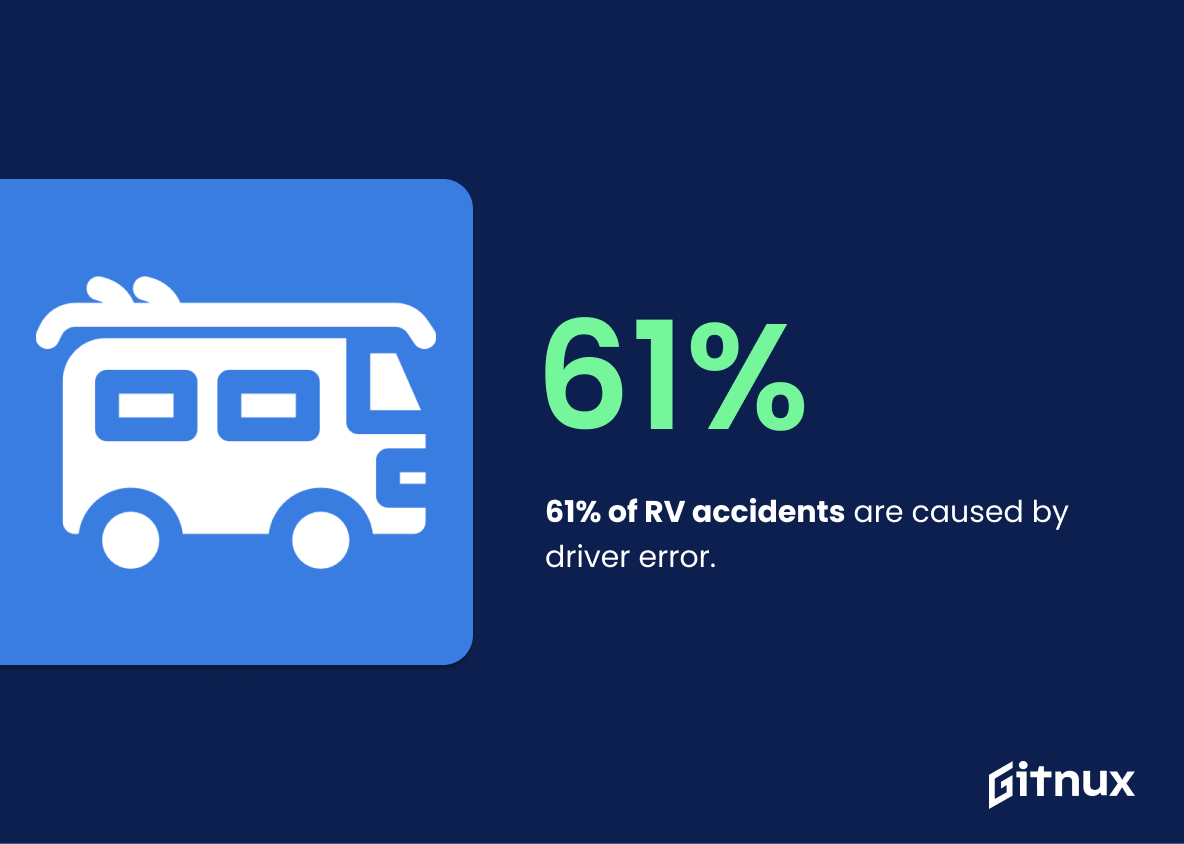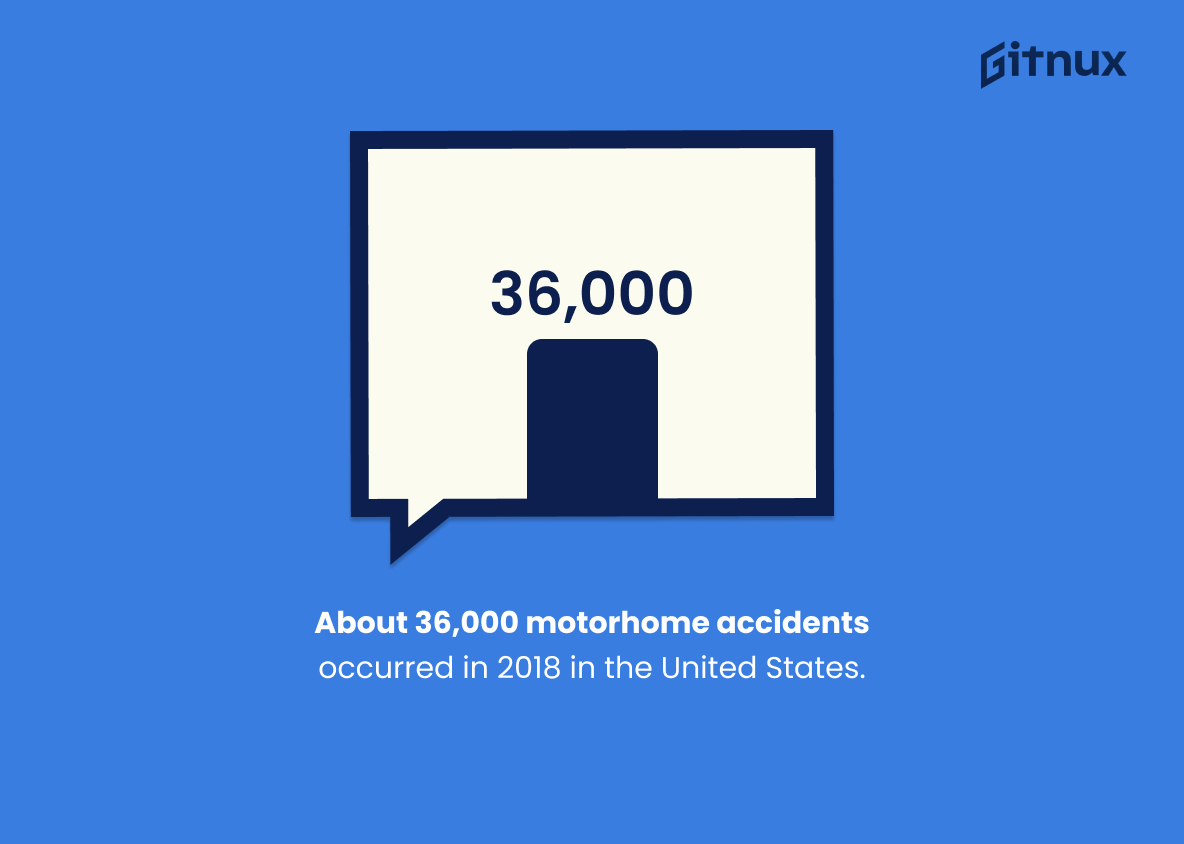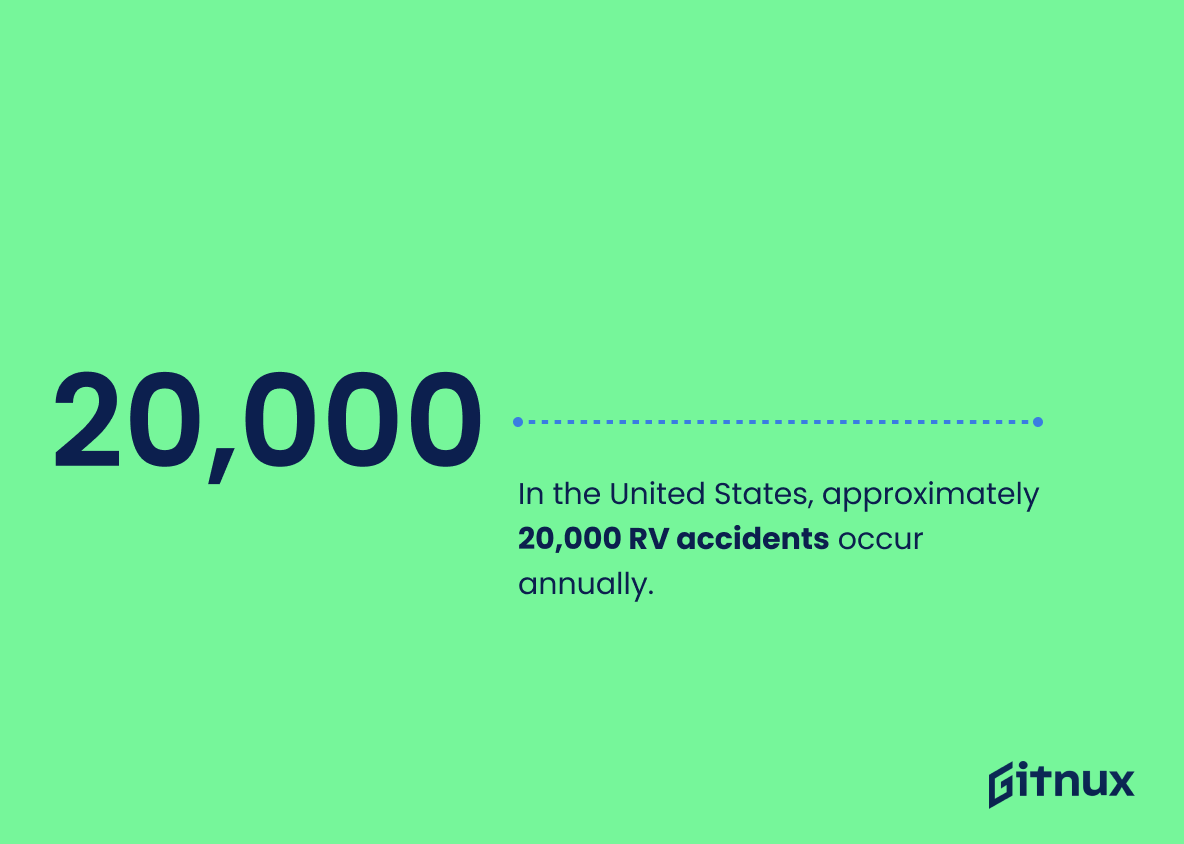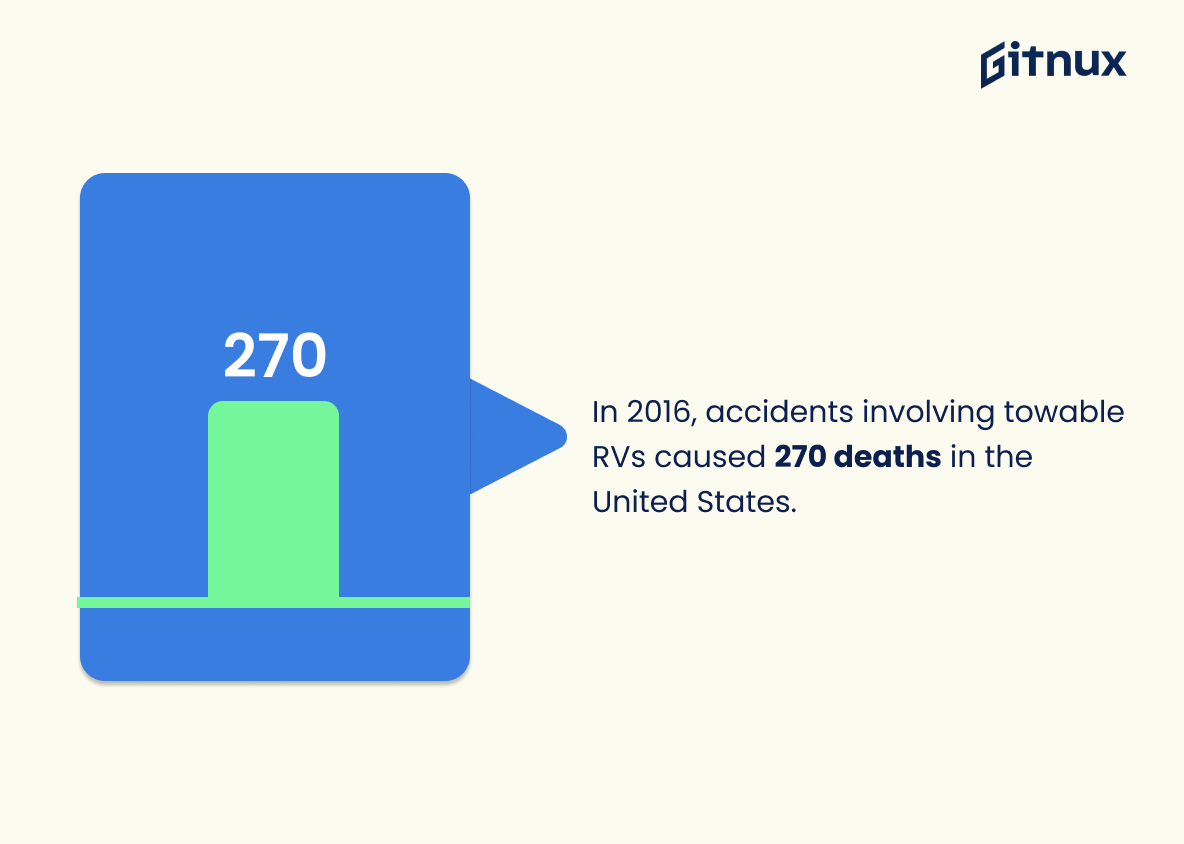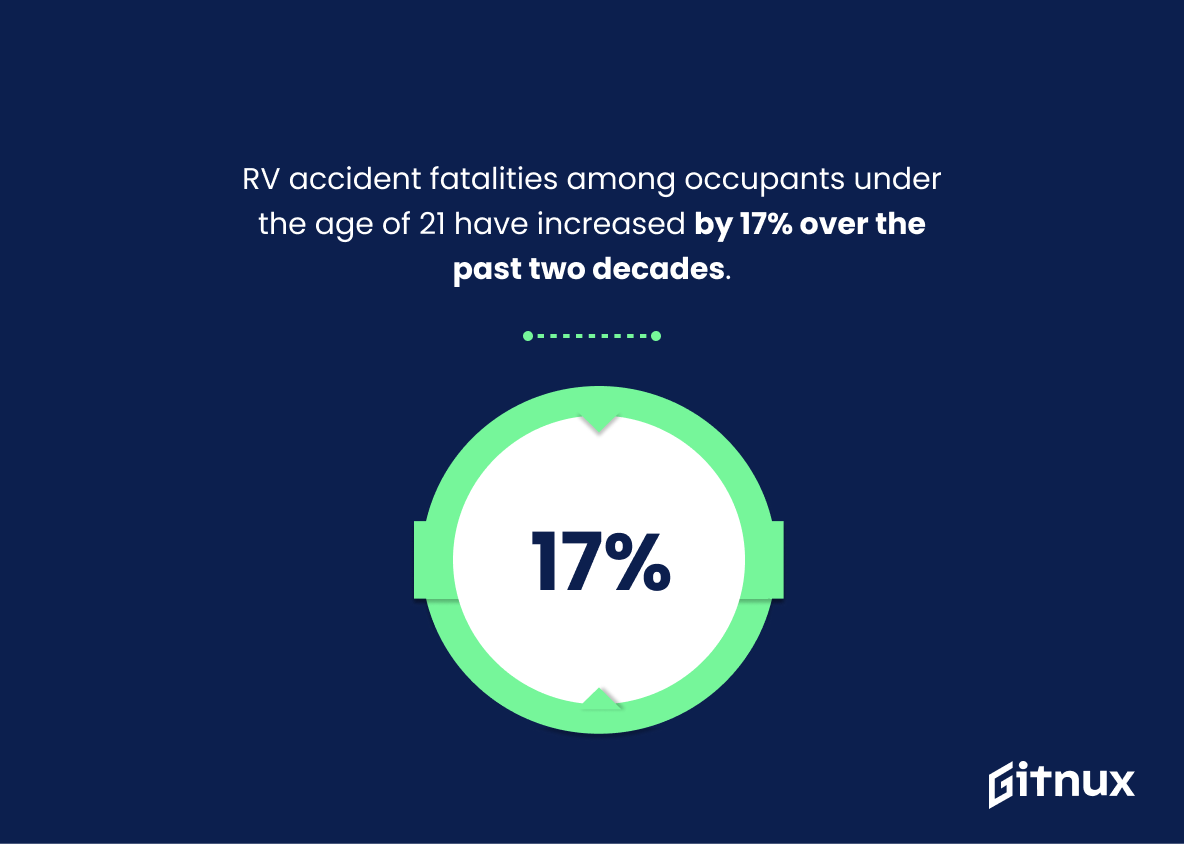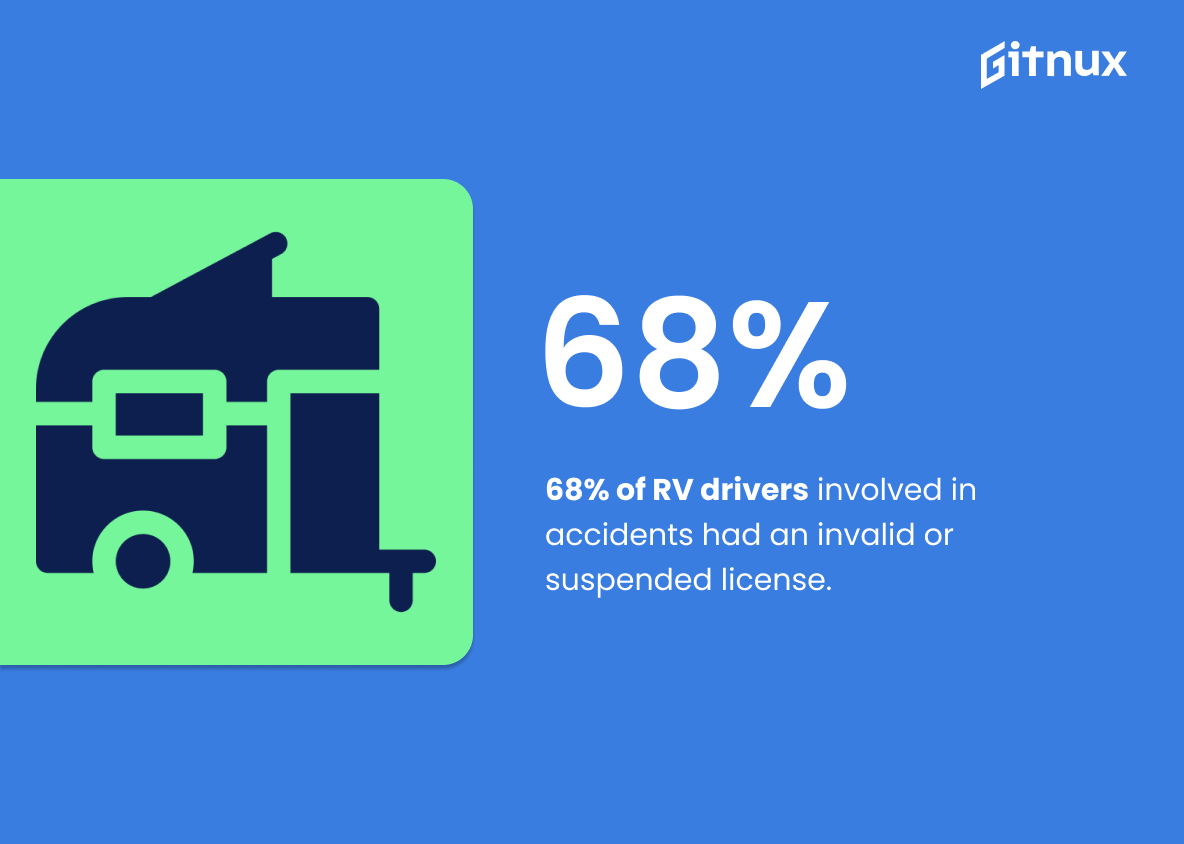RV accidents can be a serious issue, and it is important to understand the statistics behind them. Approximately 20% of all RV accidents result from blowouts or tire failure, while 61% are caused by driver error. In 2019, there were 23 fatalities in Colorado due to RV accidents and 2.2% of fatal crashes involving large vehicles occurred in California with motorhomes involved. 45% of these incidents happen during summer months and 36,000 motorhome accidents happened across the United States in 2018 alone. 34% of RV collisions involve commercial vehicles while 69%, surprisingly enough, are single-vehicle events; 29% include large trucks as well as 5.6 % leading to severe injuries for those involved – 68 percent having an invalid or suspended license at that time too. 18 percent occur because of issues related to towable RVs such as swaying or jackknifing – not forgetting about Class A Motorhomes making up 40 percent when it comes down to fatalities resulting from recreational vehicle mishaps.
Rv Accident Statistics Overview
61% of RV accidents are caused by driver error.
This statistic is a stark reminder of the importance of taking proper safety precautions when operating an RV. It highlights the fact that the majority of RV accidents are caused by driver error, meaning that the majority of these accidents could have been avoided with proper care and attention. This statistic serves as a warning to RV drivers to be extra vigilant when behind the wheel, and to take all necessary precautions to ensure their safety and the safety of others.
About 36,000 motorhome accidents occurred in 2018 in the United States.
This statistic is a stark reminder of the dangers of motorhome travel. It highlights the need for RV owners to be aware of the risks associated with operating a motorhome and to take the necessary precautions to ensure their safety. It also serves as a warning to other drivers to be mindful of motorhomes on the road and to take extra care when driving near them.
In the United States, approximately 20,000 RV accidents occur annually.
This statistic is a stark reminder of the potential danger of RV travel. It serves as a warning to RV owners and drivers to be extra vigilant when on the road, as the consequences of an accident can be severe. It also highlights the importance of taking the necessary precautions to ensure the safety of everyone involved.
In 2016, accidents involving towable RVs caused 270 deaths in the United States.
This statistic is a stark reminder of the dangers of towable RVs and the importance of taking safety precautions when operating them. It highlights the need for RV owners to be aware of the risks associated with towing and to take the necessary steps to ensure their safety and the safety of others. It also serves as a warning to those who may be considering purchasing a towable RV, as it demonstrates the potential consequences of not taking the necessary precautions.
RV accident fatalities among occupants under the age of 21 have increased by 17% over the past two decades.
This statistic is a stark reminder of the dangers of RV accidents for young people. It highlights the need for increased safety measures and education to ensure that young people are aware of the risks associated with RV travel and how to minimize them. It also serves as a call to action for parents and guardians to ensure that their children are properly supervised and instructed on the proper safety protocols when operating or riding in an RV.
68% of RV drivers involved in accidents had an invalid or suspended license.
This statistic is a stark reminder of the importance of having a valid license when operating an RV. It highlights the fact that a significant portion of RV drivers involved in accidents were not legally allowed to be behind the wheel, which could have contributed to the severity of the accidents. This statistic serves as a warning to RV drivers to make sure they are properly licensed before taking to the road.
Conclusion
From the statistics presented, it is clear that RV accidents are a serious issue. Tire blowouts and driver error account for a large portion of these incidents, while towing issues such as sway or jackknifing also contribute significantly. In addition, many fatalities occur due to motorhomes in California and Colorado specifically. It is important for drivers of RVs to be aware of the risks associated with operating them on roads and highways so they can take steps towards preventing an accident from occurring. Furthermore, those who own RVs should ensure their vehicles are properly maintained at all times in order to reduce the chances of equipment failure leading to an incident.
References
0. – https://www.www.freewayinsurance.com
1. – https://www.www.ncbi.nlm.nih.gov
2. – https://www.www.codot.gov
3. – https://www.safer-america.com
4. – https://www.www.tandfonline.com
5. – https://www.www.attorneymcduffie.com
6. – https://www.www.campingworld.com
7. – https://www.medium.com
